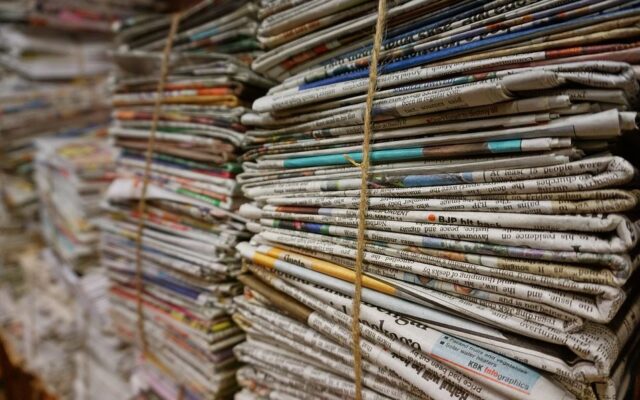
How Is Paper Recycled?
Paper recycling is a process which, when carried out correctly, can hugely benefit the environment, reducing the need for high levels of paper production as recycled material is used instead. Recycled paper produces a massive 73% less air pollution than paper made from raw materials; a figure which demonstrates just how harmful this manufacturing process is. Indeed with the UK’s monumental consumption of paper at an all-time high of 12.5 million tonnes per year, each ton of which requires 24 trees to make, the act of recycling is more important than ever.
Here, we explain a little more about how the process works and the stages that occur during the paper recycling procedure.
Collection
Firstly, paper is collected from either your recycling collection or by the local council. The different types of paper will be graded, whereby it will be separated into different qualities.
Pulping
Once the paper has reached the paper mill, it is pulped into a tank. The tank, containing chemicals including hydrogen peroxide and caustic soda, as well as soap and water, will break down and separate the fibres of the paper. The remaining fibres will be screened in order to remove debris including paper clips, tape, plastic and staples that may have been placed into recycling with the paper.
Floatation tank
The fibres are placed into the floatation tank, and are cleaned and de-inked a number of times. Following this procedure, the paper fibres will get continually whiter, at which point whitening agents will be added to improve the whiteness further still. Next, the pulp which, at this stage is 99% water and 1% fibre, is pumped over onto a paper machine.
Drying
After pulping, the pulp will be passed through rollers or over a vibrating machine in order to remove the water from it. At this stage, the pulp is made up of 50% water, 50% fibre.
Next, the sheets will be passed through a drying section on heated rollers. Temperatures reach as high as 130 degrees, something which alters the pulp’s formation to 45% water, 55% fibre. At this stage, the paper is then dried before being wound into large rolls.
Testing
In this penultimate stage, the paper will be tested to ensure it reaches the standard required by the manufacturers. The quality should be high, allowing for strength, brightness and a good gloss finish.
Packing
Finally, once the recycling process has been completed, the giant rolls – which at this stage can weigh up to 30 tonnes – can be separated into smaller reels or sheets, before being packed and, eventually, despatched to printers.
Here at Brown Recycling, we are proud to provide an expert cardboard and paper recycling service, with our recycling plant and zero-to-landfill targets meaning that we recycle 100% of the paper that we collect. For more information on our paper recycling service, or for any other enquiry, simply get in touch with us today. Our friendly team of experts will be happy to help with any questions you may have.
This website uses cookies to enhance your browsing experience and deliver personalised ads. By clicking “Accept All Cookies”, you agree to the storing of cookies on your device to enhance site navigation, analyse site usage, and assist in our marketing efforts.




